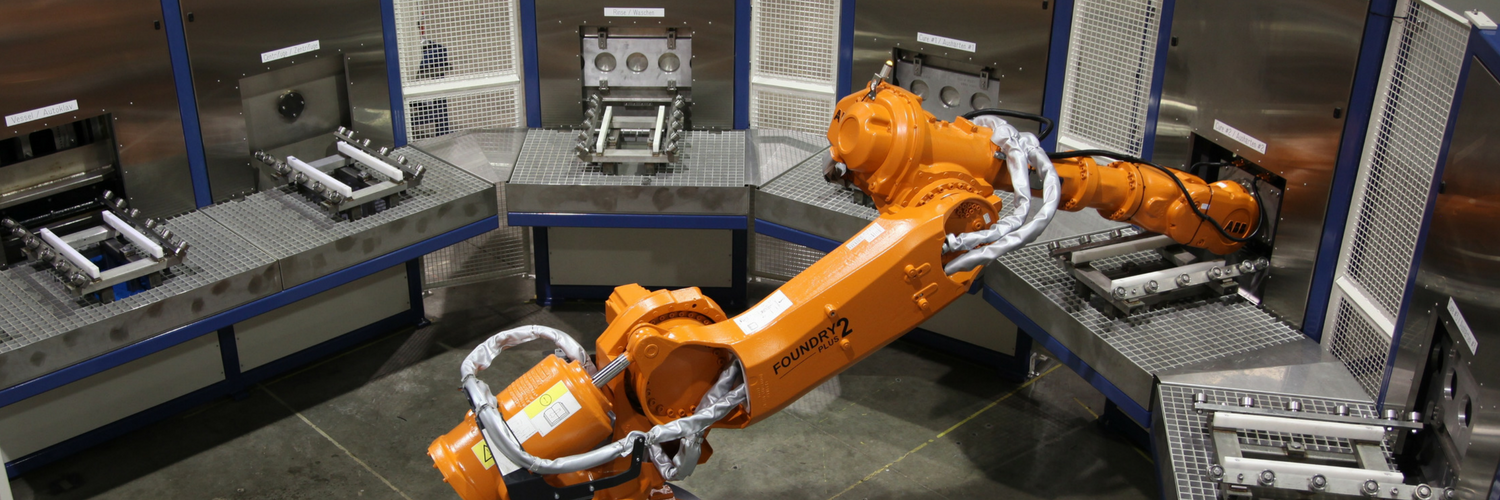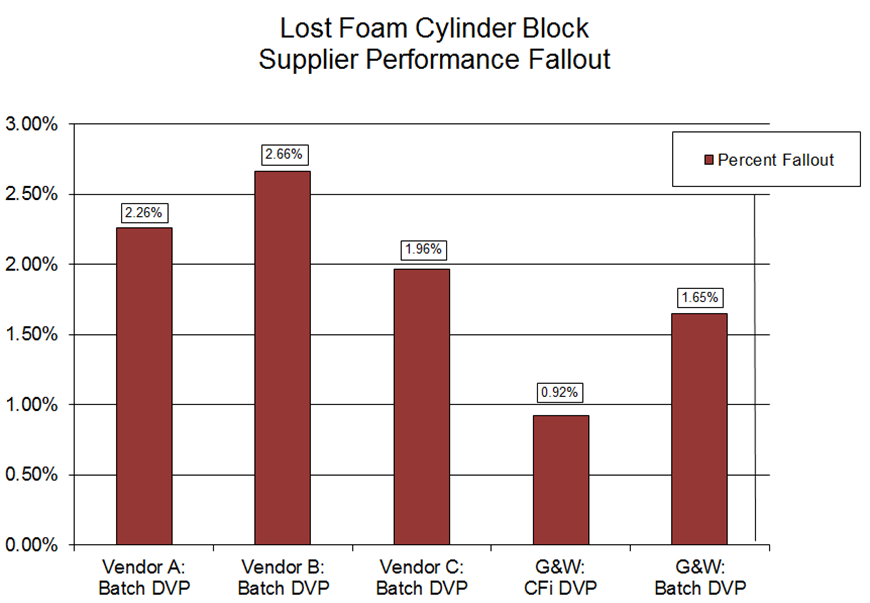Manufacturing castings with the lost foam process enables the foundry to produce castings with many benefits and features not available in other casting processes. This casting process is advantageous for very complex castings that would regularly require cores. It is also dimensionally accurate, maintains an excellent surface finish, requires no draft, and has not parting lines so no flash is formed.

Like all casting processes, lost foam castings may exhibit unwanted shrink porosity in the final product. The lost foam casting shrink porosity is due to the dispersal of the gas from the destruction of the foam cores during the casting process. Many lost foam castings exhibit leaks that prevent the castings from functioning properly. The leaks keep gases and fluids from properly flowing through the casting when under pressure.
The Challenge
With the launch of a new family of three engines using lost foam castings for both cylinder heads and blocks, an OEM began to evaluate the effectiveness of different vacuum impregnation processes. After carefully evaluating results from different vacuum impregnation processes, it was specified that all lost foam should be processed through a Dry Vacuum and Pressure (DVP) process. The plan required 100% impregnation of both the block & head and even with the superior results delivered by the DVP process the OEM needed to ensure the absolute highest seal rates.
The Solution
Godfrey & Wing had been working on a new revolutionary approach to vacuum impregnation- Continuous Flow Impregnation (CFi). Ideally, designed and suited for powertrain manufacturing, the new system would:
- Use DVP processing in a controlled single-piece method, quickly taking each casting to deeper vacuum end-points in order to maximize the processes effect on the target shrink porosity.
- Recover more porous castings increasing the OEM’s first time through pressure test rate to >99%.
- Reduce the average DVP impregnation cycle time from twenty-two minutes to forty-five seconds.
- Use robotics to increase throughput and eliminate handling damage.
- Detect process variations and self-contain any suspect castings allowing for improved repeatability and consistency.
Working with the OEM, Godfrey & Wing initially launched the new CFi process on lost foam cylinder heads. The results were exceptional and the program was expanded to cylinder blocks as new equipment was designed and built.

The Results
The OEM and Godfrey & Wing conducted a massive Production Trial Run (PTR), studying the results on over 450,000 cylinder block castings. Castings were impregnated on Godfrey & Wing’s CFi and batch system, as well as the batch systems of three other vendors. The data in figure 1 shows that the Godfrey & Wing CFi technology surpassed all other traditional batch systems used to impregnate lost foam castings.

Figure 1
In Summary
With years of experience with the impregnation of lost foam castings, Godfrey & Wing has developed processes and systems targeted to meet the unique requirements of lost foam castings.
- The use of DVP in order minimize the fall-out at final test due to shrink porosity.
- The development of the CFi’s rapid single-piece-flow technology, which provides for manufacturing cells that are 100% self-contained for quality and can easily support other quality functions for the OEM such as part data collection and individual part inspection.
Godfrey & Wing has impregnated millions of lost foam castings. Through continuous effort to achieve better results, Godfrey & Wing has been able to reduce the fall-out at final test for LF components for major powertrain programs. Godfrey & Wing approach to systems, like the CFi, have also reduced the risk of non-conforming parts entering the production flow. Godfrey & Wing systems are shipped worldwide to enable our customers to recover more castings and use less resources and overhead than any other vacuum impregnation system in the world.

